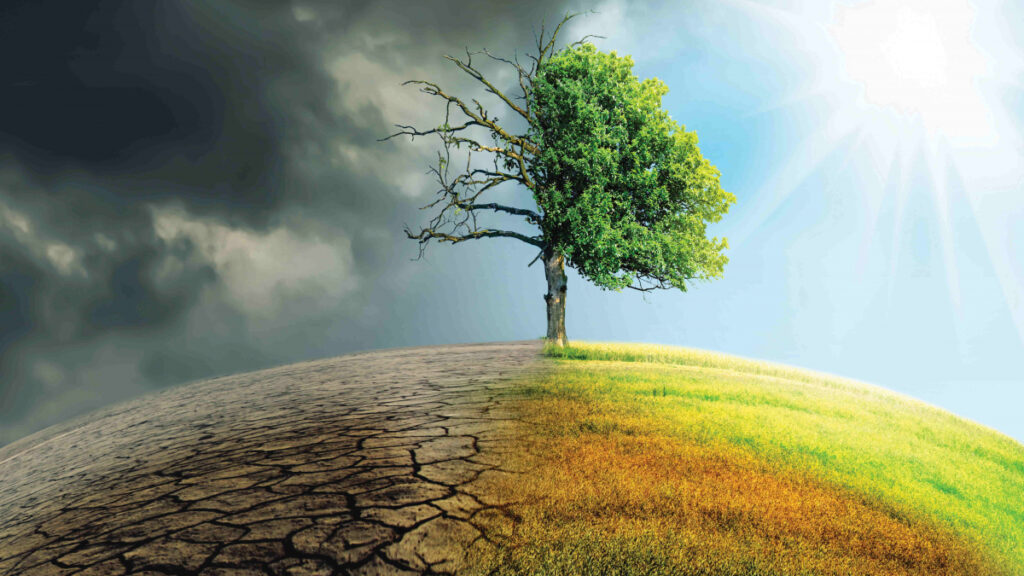
The climate crisis and the environment are two closely related issues that are of critical importance to the well-being of our planet and its inhabitants.
The climate crisis refers to the rapid and significant changes in the Earth’s climate that are occurring as a result of human activities, such as the burning of fossil fuels, deforestation, and agriculture. These activities have led to an increase in the concentration of greenhouse gases in the atmosphere, which trap heat and lead to global warming.
The consequences of the climate crisis include rising sea levels, more frequent and severe weather events such as hurricanes and heatwaves, changes in precipitation patterns, and increased risk of wildfires. These changes are already having a significant impact on human societies and ecosystems around the world.
Rising sea levels refer to the gradual increase in the average global sea level due to the melting of ice caps and glaciers and the expansion of seawater as it warms. This phenomenon is primarily caused by the increase in greenhouse gases in the atmosphere, which trap heat and lead to global warming.
The effects of rising sea levels are numerous and can have far-reaching consequences for coastal communities, low-lying islands, and other areas near sea level. Some of the potential consequences include coastal erosion, flooding, saltwater intrusion into freshwater supplies, loss of habitat and biodiversity, and damage to infrastructure such as roads, buildings, and ports.
In addition to these immediate impacts, rising sea levels can also have long-term effects on global climate patterns, as they can alter ocean currents and lead to changes in weather patterns around the world. As such, it is important to take steps to mitigate the causes of rising sea levels, such as reducing greenhouse gas emissions and investing in measures to protect coastal communities and infrastructure from the effects of sea level rise.
The environment refers to the natural world around us, including the air, water, land, and the living organisms that inhabit it. Human activities such as pollution, deforestation, and overfishing have caused significant damage to the environment, leading to the loss of biodiversity and the degradation of ecosystems.
Protecting the environment is essential for maintaining the health and well-being of our planet and its inhabitants. This includes measures to reduce pollution, conserve natural resources, protect biodiversity, and mitigate the impacts of the climate crisis.
Protecting the environment is essential for ensuring the sustainability of the planet and preserving it for future generations. There are several ways to protect the environment, including:
- Reduce, reuse, and recycle: The three R’s are a simple yet effective way to reduce waste and conserve resources. By reducing the amount of waste that we generate, we can reduce the amount of landfills and incinerators needed to dispose of it.
- Conserve water: Water is a precious resource, and we need to use it wisely. Simple actions such as fixing leaky faucets, taking shorter showers, and using a broom instead of a hose to clean driveways can go a long way in conserving water.
- Use energy-efficient appliances: Using energy-efficient appliances, such as LED light bulbs and Energy Star-rated appliances, can help reduce the amount of energy we consume, thereby reducing our carbon footprint.
- Plant trees: Trees absorb carbon dioxide and other pollutants from the air and produce oxygen. By planting trees, we can help reduce the amount of carbon dioxide in the atmosphere.
- Support sustainable practices: Supporting companies that use sustainable practices and products can help reduce the negative impact of consumerism on the environment.
- Reduce carbon emissions: One of the biggest threats to the environment is the high levels of carbon emissions generated by human activities such as industrial supply. By reducing our use of fossil fuels, such as oil and gas, and switching to renewable energy sources, such as solar and wind power, we can help reduce carbon emissions.
- Advocate for policy changes: Policies and regulations can have a significant impact on the environment. By advocating for policy changes that support the environment, such as carbon taxes or regulations on pollutants, we can help protect the environment.
Addressing the climate crisis and protecting the environment require collective action at the global, national, and local levels. It involves making changes to the way we live and work, transitioning to more sustainable energy systems, and adopting practices that minimize our impact on the environment.

